LFOs are a crucial part of music production, as they can transform static sounds into dynamic, captivating sonic landscapes.
Today, we’ll be breaking down every aspect of LFOs and how they can make your music stand out from the rest.
Get ready to delve into the enthralling world of Low-Frequency Oscillators and discover:
- The fundamentals of LFOs ✓
- Demystifying the LFO section & its key functions ✓
- The Role of LFOs in shaping dynamic sonic textures ✓
- Harnessing the power of LFOs for unique sound design ✓
- The interaction between low frequencies & various sound sources ✓
- Expert tips to master LFO parameters ✓
So, buckle up and prepare to expand your knowledge of LFOs and elevate your music production skills to new heights.
Table of Contents
- What Is An LFO?
- Demystifying the LFO Section
- LFOs in Music Production
- The Power of Low-Frequency Oscillation
- Understanding Low Frequencies
- Modulating Multiple Parameters
- Synth Oscillators and Low-Frequency Oscillators: The Perfect Combination
- Analog Synths vs. Digital Synths
- Mastering Modulation Techniques
- Diving Deep into LFO Parameters
- Modulation Matrix and Advanced Controls
- What Is An Lfo? Final Thoughts
What Is An LFO?
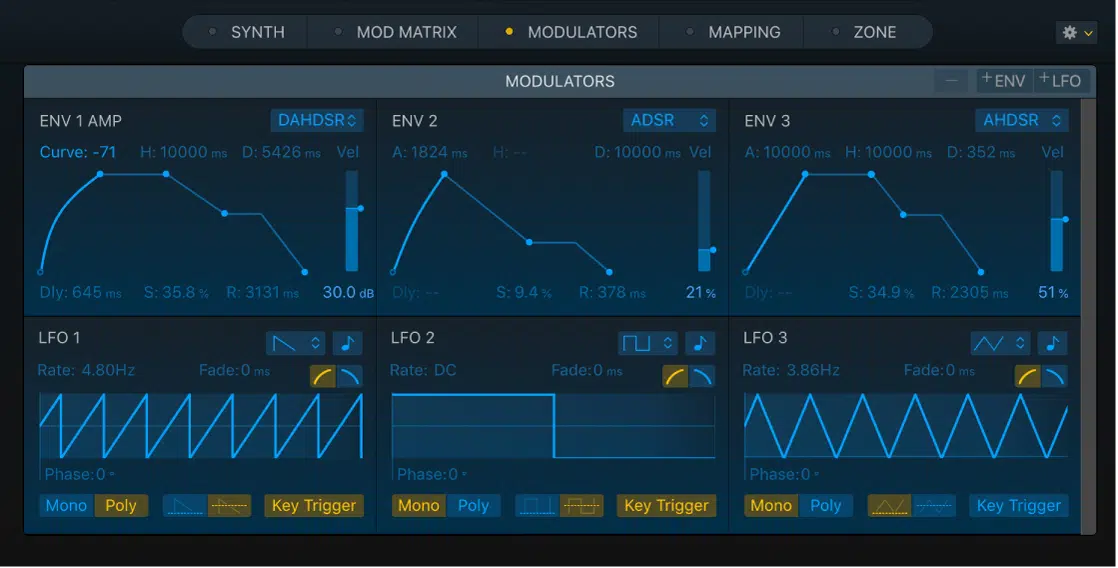
A Low-Frequency Oscillator (LFO) is a fundamental component of synthesizers and audio effects processors that creates a periodic low-frequency oscillation at low frequencies, usually below 20 Hz.
This oscillation can be used to modulate various parameters of a sound, such as pitch, volume, or filter cutoff frequency, adding movement and expressiveness to the sound.
LFOs are distinct from audio oscillators, which generate the actual sound waves we hear in a synthesizer.
While audio oscillators operate at frequencies within the audible range, LFOs work at lower frequencies, making their primary purpose modulation rather than sound generation.
Demystifying the LFO Section
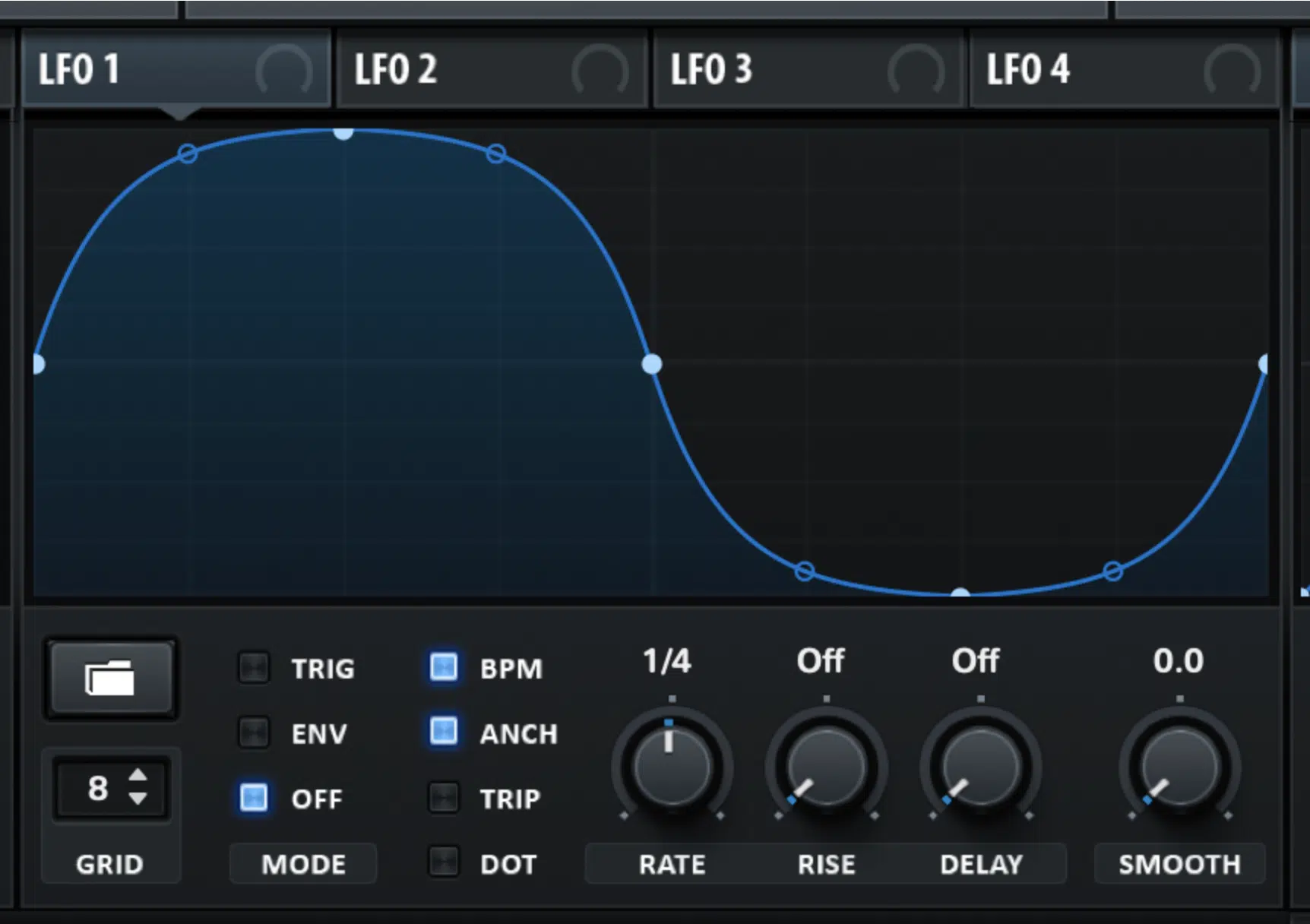
The LFO section of a synthesizer or effects processor can sometimes be intimidating for newcomers, but understanding its key components is crucial for mastering modulation.
Let’s break down the main parameters found in an LFO section:
- Rate/Speed 一 This parameter controls how fast the LFO oscillates. Faster rates can create rapid modulation effects, while slower rates result in gradual, evolving changes.
- Depth/Amount 一 This parameter determines the intensity or amplitude of the modulation. Higher values result in more dramatic effects, while lower values create subtle modulation.
- Waveform 一 The waveform defines the shape of the LFO signal. Common waveforms include sine wave, square wave, triangle wave, and sawtooth wave, each imparting a distinct character to the modulation.
- Sync 一 This parameter allows you to synchronize the LFO rate to the tempo of your project, enabling rhythmic and tempo-synced modulation effects.
- Destination 一 This parameter determines which aspect of the sound the LFO will modulate, such as pitch, volume, or filter cutoff frequency.
By familiarizing yourself with these core parameters, you’ll be better equipped to harness the power of LFOs in your music production.
LFOs in Music Production
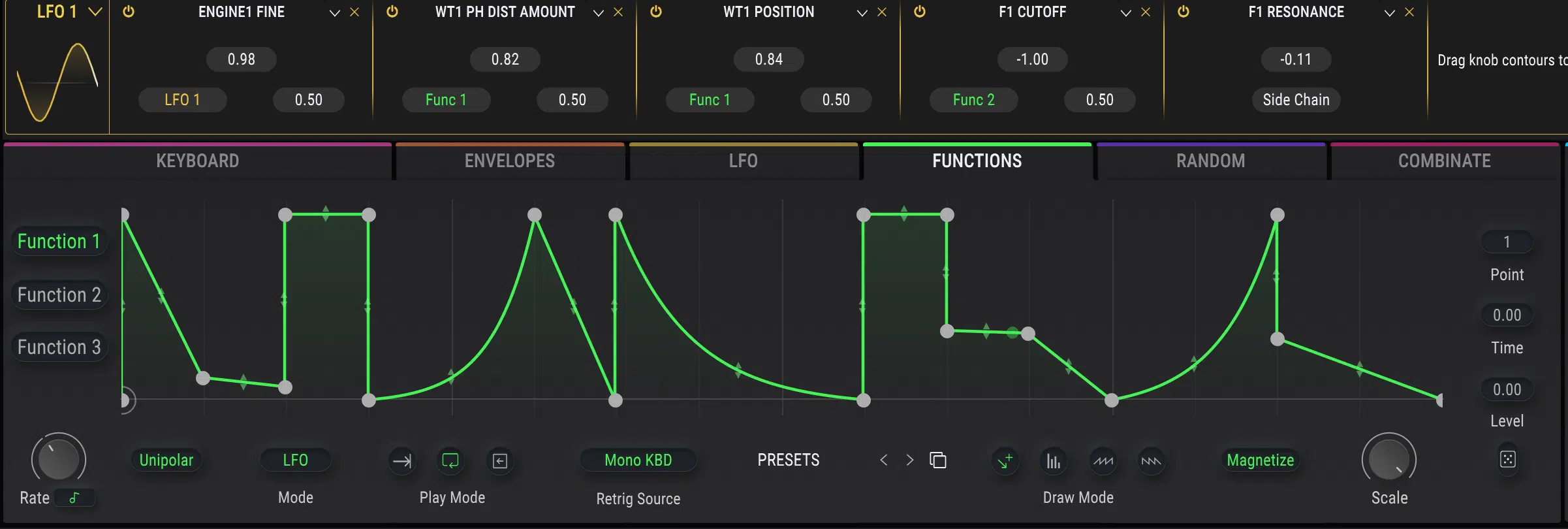
LFOs play a crucial role in shaping the character and expressiveness of our interesting sounds.
By modulating various parameters, LFOs introduce dynamic movement and complexity that can transform static, lifeless sounds into captivating, evolving textures.
For example, using a low-frequency oscillator to modulate the pitch of a synth lead can create a lively, expressive vibrato effect.
Similarly, applying an LFO to the filter cutoff of a synth pad can generate sweeping, atmospheric textures that add depth and interest to a mix.
By understanding the potential of LFOs and incorporating them into your sound design process, you can elevate your music to new levels of creativity and expression.
The Power of Low-Frequency Oscillation
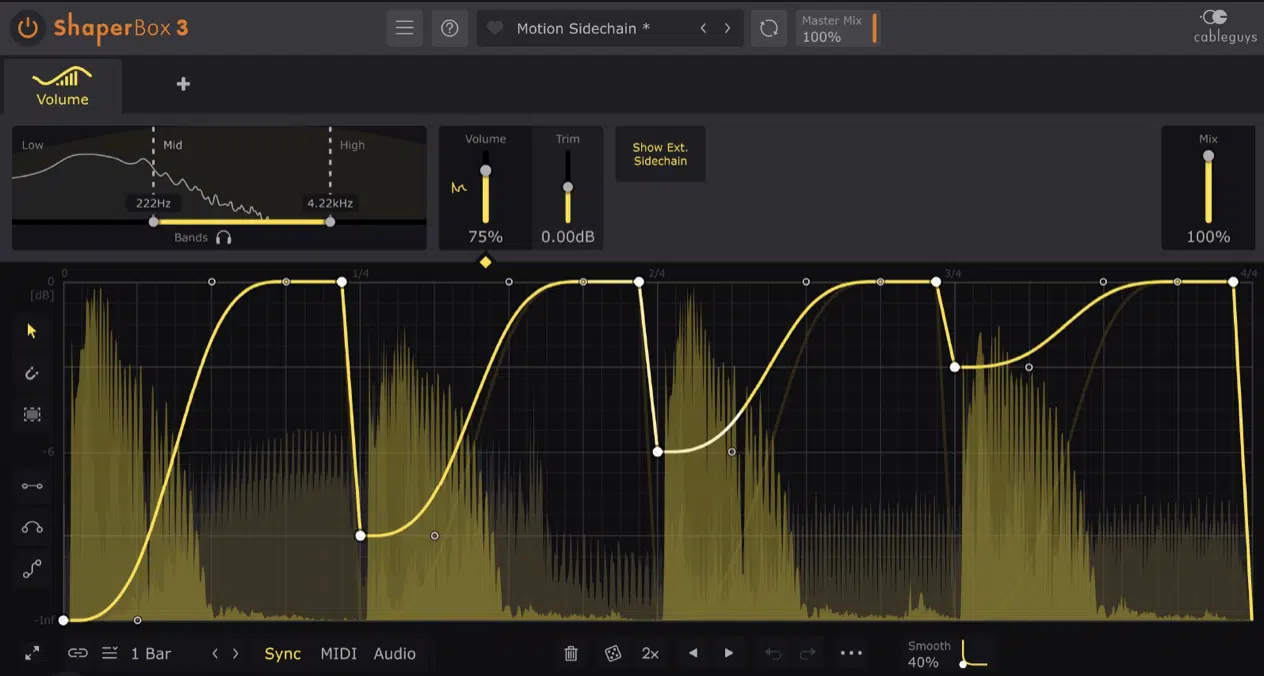
Low-frequency oscillation is the driving force behind the dynamic, expressive effects that LFOs can create.
Since LFOs operate at sub-audible frequencies, they can modulate various parameters of a sound without being directly perceived by the listener.
For instance, a slow-moving low-frequency oscillator applied to the amplitude of a synth pad can create a subtle, pulsating effect that adds movement and depth.
Conversely, a faster LFO applied to the filter cutoff of a fire bassline can generate a rhythmic, grooving sound that propels the track forward.
Experimenting with different LFO rates, depths, and waveforms can unlock a vast array of sonic possibilities and help you craft unique, interesting sounds for your tracks.
In short, being familiar with low-frequency oscillation is super important.
Understanding Low Frequencies
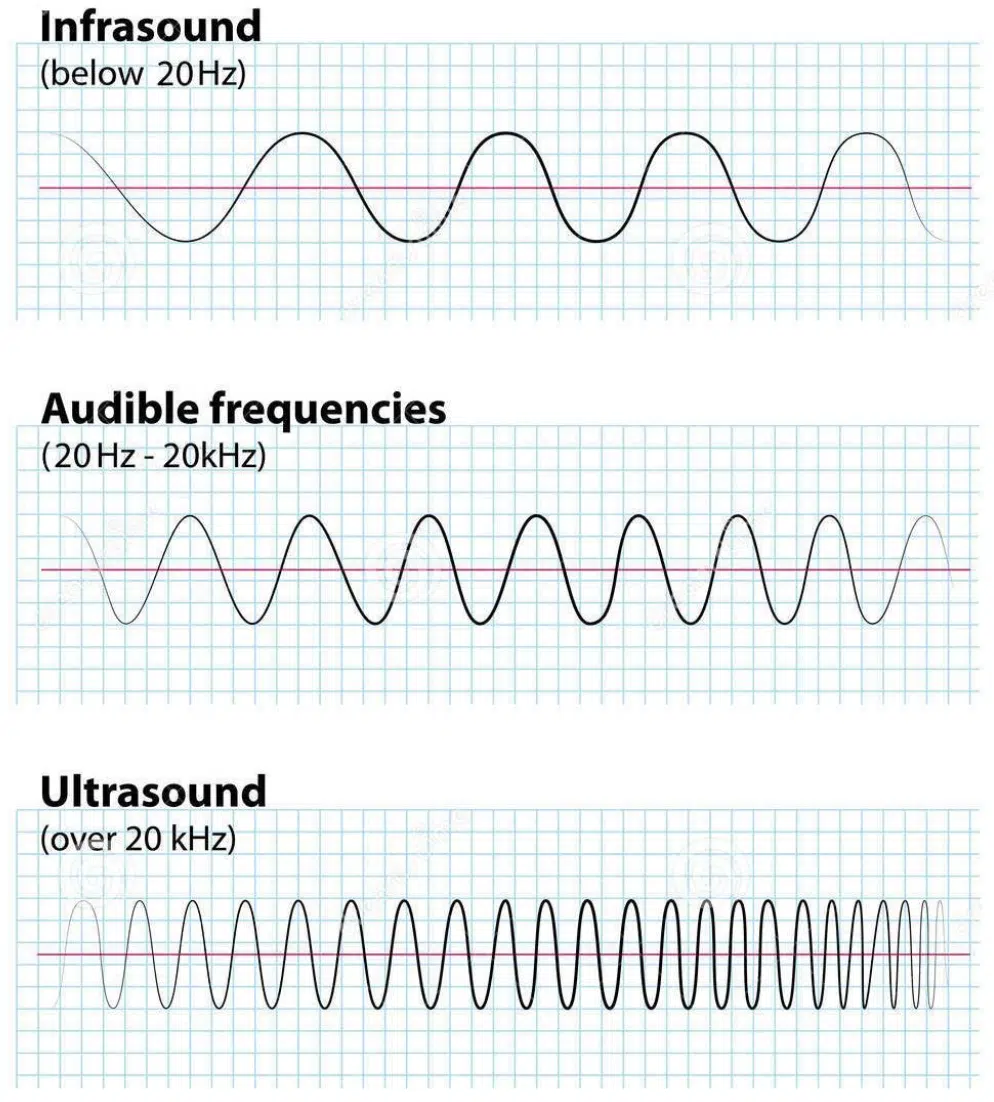
When working with LFOs, it’s important to understand the concept of low frequencies and how they impact the modulation effects.
Low frequencies, typically below 20 Hz, are considered sub-audible and cannot be heard by human hearing.
However, these frequencies can still have a significant impact on the overall sound when used for modulation purposes.
For example, applying an LFO with a very low frequency (e.g., 0.1 Hz) to the cutoff of a synth pad can result in a slow, evolving texture that changes over time.
This can be particularly useful for creating atmospheric, ambient soundscapes.
On the other hand, using an LFO with a higher frequency (e.g., 10 Hz) can create rapid, pulsating effects that add energy and create movement within a track.
Understanding how low frequencies interact with the various parameters of a sound will enable you to create more nuanced and expressive modulation effects.
Modulating Multiple Parameters
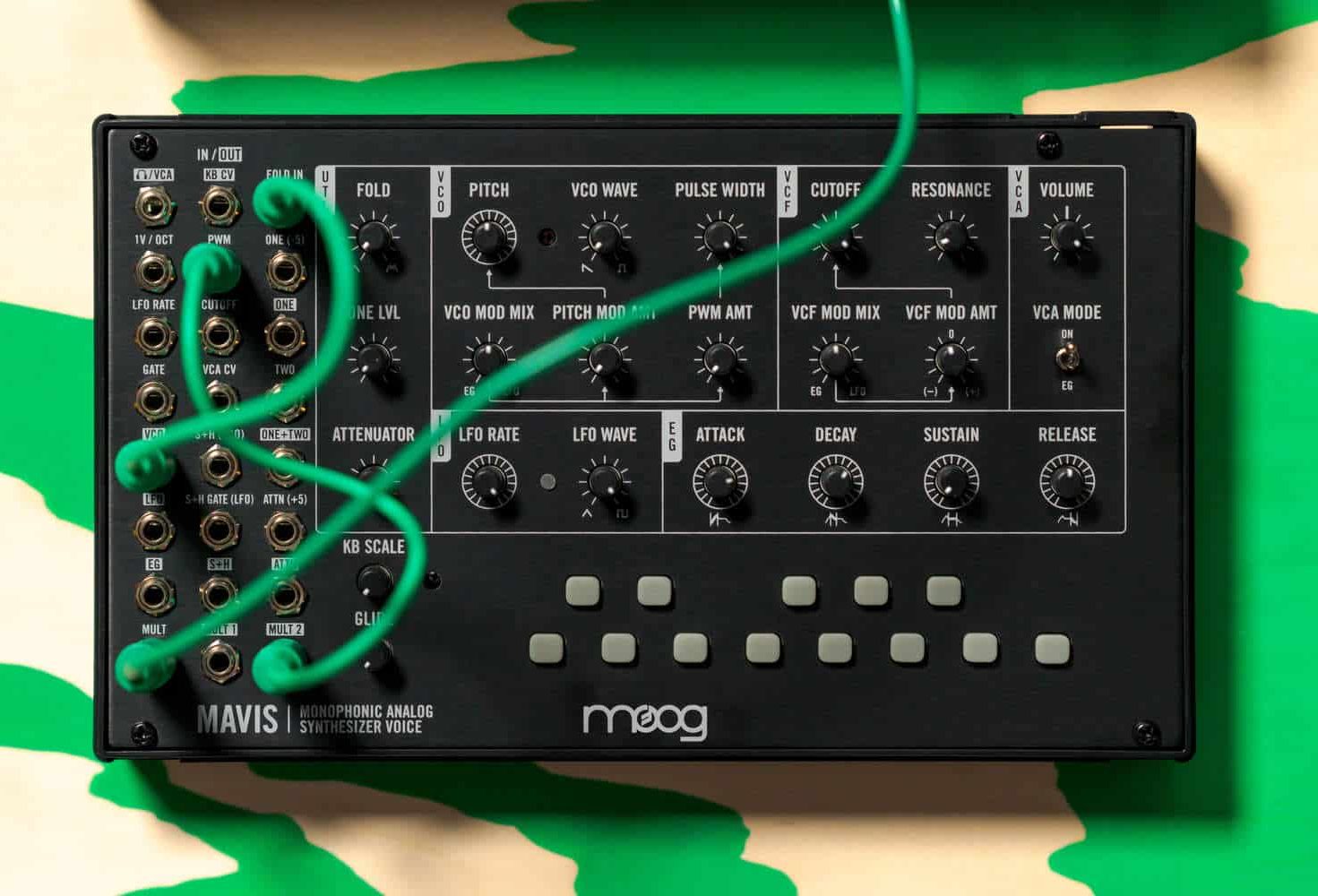
In many synthesizers and effects processors, LFOs can be used to modulate multiple parameters simultaneously, creating complex, evolving sounds.
By understanding how different parameters interact with one another when modulated by an LFO, we can unlock even more creative possibilities.
Here are a few examples of how different parameters can be modulated by an LFO:
- Modulating Pitch and Filter Cutoff 一 By applying an LFO to both the pitch and filter cutoff of a synth patch, we can create a dynamic, evolving sound that combines the expressiveness of vibrato with the movement of a sweeping filter.
- Modulating Volume and Pan 一 An LFO can be used to create auto-pan effects by modulating the stereo panning of a sound while simultaneously modulating its volume. This can result in a swirling, immersive audio experience that adds depth and interest to a mix. It’s also an ideal technique when stereo options are limited or non-existent.
- Modulating Multiple Parameters With Different LFOs 一 By assigning different LFOs to modulate various parameters, we can create intricate, evolving textures.
For example, using one LFO to modulate filter cutoff and another to control oscillator waveshape can produce a rich, complex sound that morphs over time.
You can also take it one step further by modulating the LFOs that are assigned to already existing parameters (described above) for the ultimate modulation experience.
This method not only yields crazy modulation but even produces its very own sound depending on how the LFO is oscillated by the other element and which destination it’s assigned to.
By exploring the interaction between multiple parameters and LFOs, we can push the boundaries of our sound design capabilities and create unique music.
Synth Oscillators and Low-Frequency Oscillators: The Perfect Combination
LFOs work hand in hand with synth oscillators to generate unique, expressive sounds.
After all, aside from the speed at which they oscillate, they’re essentially one and the same.
Understanding their relationship is key to unlocking the full potential of our synthesizers.
Synth oscillators generate the raw sound that we shape and sculpt with various tools like filters, envelopes, and LFOs.
While filters and envelopes help define the overall shape and tone of the sound, LFOs introduce dynamic movement and expression.
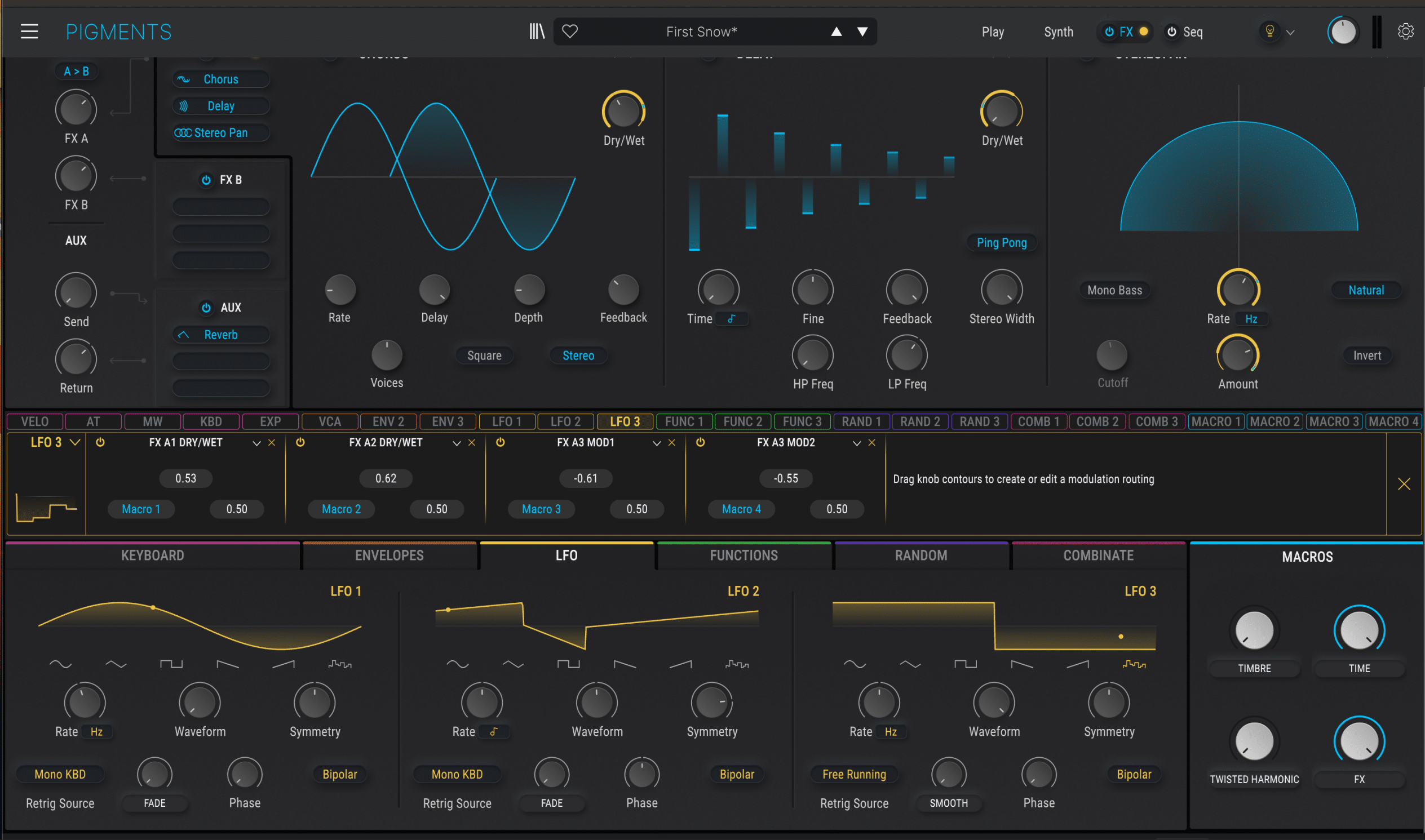
For example, by modulating the pitch of a synth oscillator with an LFO, you can generate a vibrato effect that adds richness to a lead melody.
Or, you can even use extremely subtle values to modulate the pitch in a (seemingly) random way in order to emulate a vintage synth.
In addition, you can apply that same theory to an oscillator’s ‘phase’ parameter in order to do away with a phase-locked oscillator.
This will help you emulate the random phase mechanism of a hardware synth.
Another instance is when we use a low-frequency oscillator to modulate the cutoff frequency of low-pass filters.
This can create a rhythmic “wah-wah” effect, perfect for adding a groovy, rhythmic quality to basslines or synth stabs.
This effect can be enhanced by applying the same subtle modulation to the filter resonance.
Simply push it as hard as you want, and hear it absolutely scream.
Analog Synths vs. Digital Synths
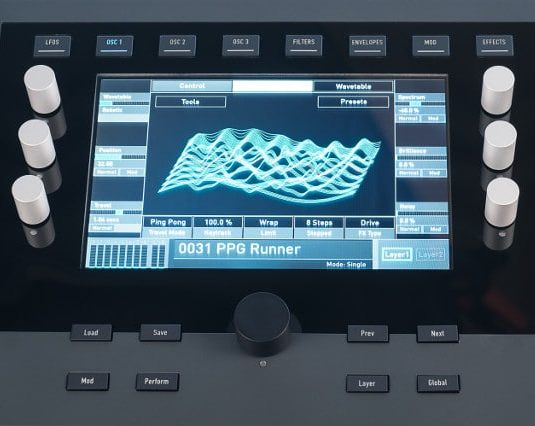
Both analog and digital synths benefit from the use of an audio oscillator.
In fact, many classic analog synths, like the Roland Juno-106 and the Moog Model D, have dedicated LFO sections that allow for precise control over modulation.
However, its destinations are fixed, so flexibility is limited.
Digital synths, on the other hand, often provide more advanced modulation options, like multiple LFOs, custom shapes, and unlimited breakpoints.
They also have complex modulation matrices which can reproduce any LFO at different audio rate speeds for more complex FM/AM/RM modulation options.
For example, with a digital synth like Serum, you can assign multiple LFOs to various parameters and even alter audio rate modulation or depth with another LFO.
The first LFO modulates the speed of LFO 2, LFO 2 modulates the speed of LFO 3, and so on (aka Daisy Chaining).
Mastering Modulation Techniques
To unlock the full potential of LFOs, it’s essential to master different modulation techniques.
From pitch and volume modulation to filter modulation and beyond, understanding these techniques can greatly enhance your sound design capabilities.
-
Pitch, Volume, and Filter Modulation
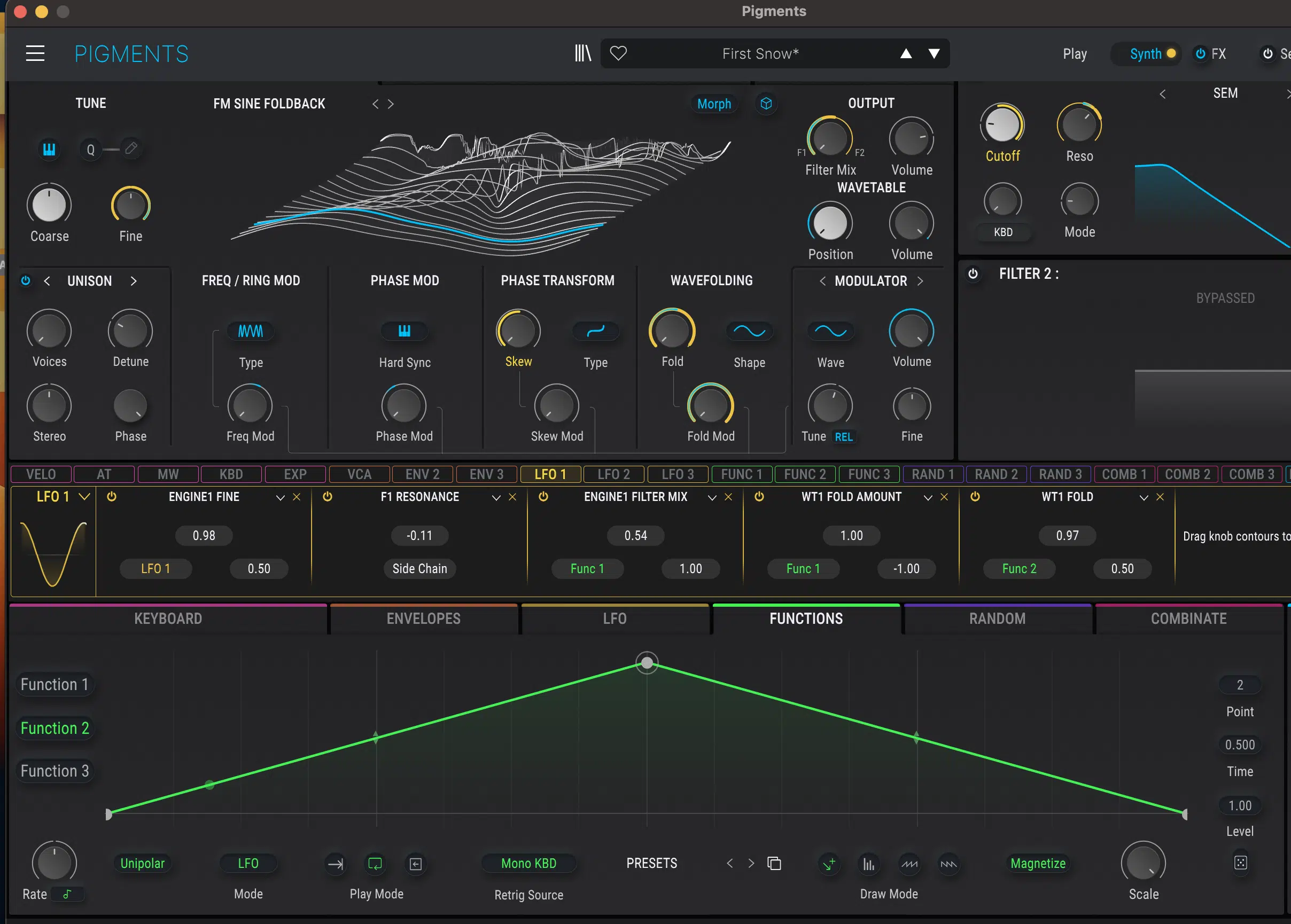
Pitch modulation is a classic LFO application that creates vibrato when applied to an oscillator’s pitch.
By adjusting the LFO rate, we can control the speed of the vibrato, while the depth determines its intensity.
For example, a slow LFO rate with a shallow depth can add a subtle, natural-sounding vibrato to a string instruments or wind instrument patch.
Volume modulation with an LFO creates a tremolo effect.
When applied to a synth pad, for instance, it can generate rhythmic pulses that add movement and interest.
Similarly, we can use LFOs to modulate a filter’s cutoff frequency, creating rhythmic filter sweeps or evolving textures.
For example, a slow-moving LFO controlling a low-pass filter’s cutoff frequency can add a sense of depth and space to a synth pad.
-
Stereo Panning and Auto Pan
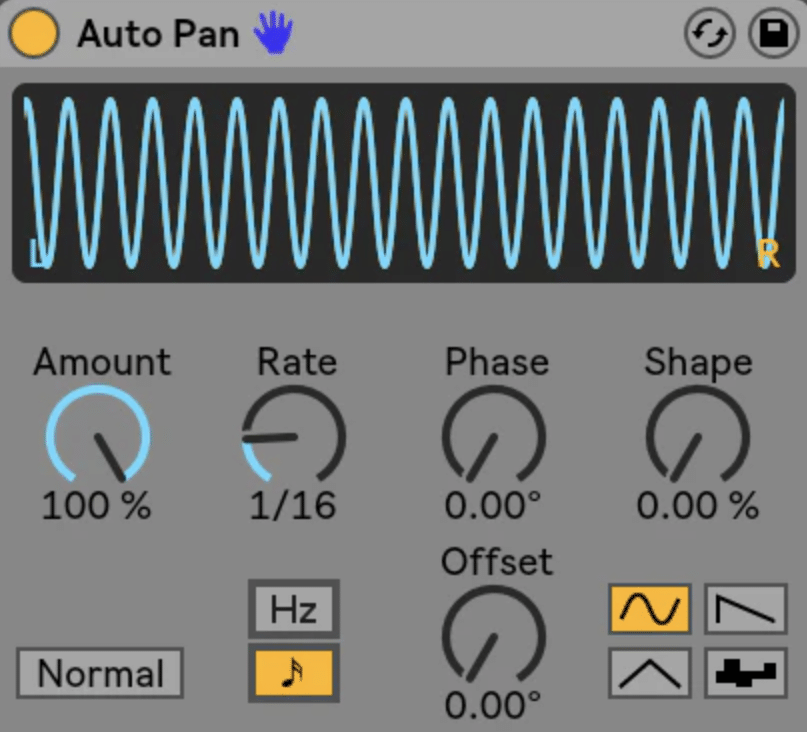
LFOs can also be used to modulate panning, creating dynamic stereo movement.
For example, by assigning an LFO to the pan control of a synth lead or a percussion element, we can create a captivating sense of space and depth in your mix.
Auto Pan is an effect that automatically pans a sound from left to right using an LFO.
In Ableton Live, the Auto Pan effect allows us to control the LFO rate, depth, and wave shape, giving us precise control over the stereo movement.
This technique can be used to create interesting spatial effects or to add motion and interest to static sounds.
Diving Deep into LFO Parameters
Understanding the various LFO parameters is essential to harnessing their full potential.
From speed and depth to waveforms and modulation matrices, mastering these parameters will allow us to create complex, expressive sounds.
-
Speed, Depth, and Waveforms
The rate or speed of an LFO determines how quickly the modulation cycles occur.
Faster rates can create rapid, rhythmic effects, while slower rates result in gradual, evolving changes.
Depth controls the intensity of the modulation and higher depth values lead to more dramatic effects.
Conversely, waveforms come in different shapes which define the shape of the LFO signal.
Common waveform types include:
- Sine waves
- Square waves
- Triangle waves
- Sawtooth waves
Each waveform imparts a distinct character to the modulation:
- Sine Wave 一 Smooth, continuous modulation, perfect for subtle, natural-sounding effects.

- Square Wave 一 Abrupt, on-off modulation, great for creating rhythmic, pulsing sounds.

- Triangle Wave 一 Linear, continuous modulation, ideal for creating a balance between smooth and abrupt changes.

- Sawtooth Wave 一 Steep, ramp-like modulation, suitable for generating unique, aggressive effects.

By experimenting with different waveforms, you can achieve various modulation styles and produce unique, personalized sounds.
Modulation Matrix and Advanced Controls
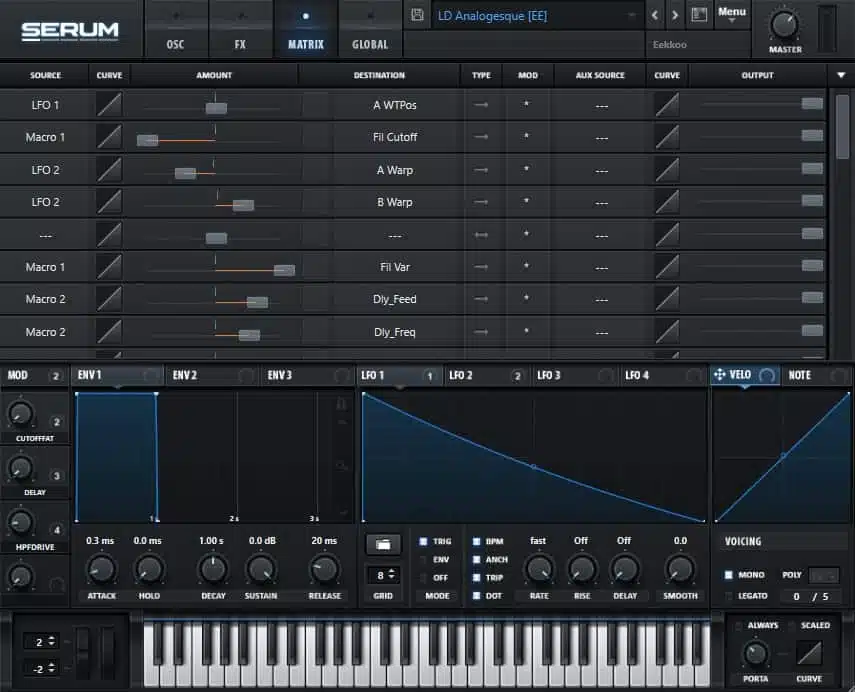
A MOD Matrix is a powerful tool found in many synths that allows for precise control over the routing of modulation sources, like LFOs, to different parameters.
This flexible system enables us to create complex, evolving sounds by assigning multiple LFOs to various parameters and even modulating LFO rate or depth with another LFO.
For example, using the MOD matrix in a synth like Serum, you can route LFO1 to control the pitch of a synth oscillator, while LFO2 modulates the rate of LFO1.
This will create intricate pitch modulation that evolves over time.
By diving deep into the modulation matrix, you can design incredibly rich and expressive sounds.
-
Tremolo, Vibrato, and Movement
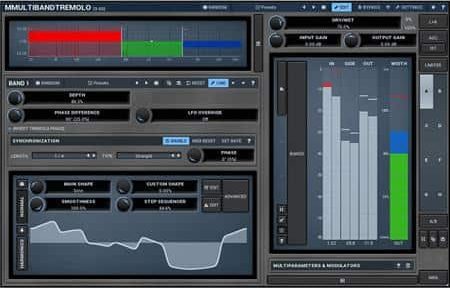
LFOs are often used to produce familiar effects like tremolo and vibrato.
Tremolo, which is a pulsating change in volume, can be achieved by modulating the volume of a sound with an LFO.
Vibrato, on the other hand, is a wavering pitch effect created by applying LFO modulation to an oscillator’s pitch.
Beyond these classic effects, LFOs can also be used to add movement and life to various elements in your tracks.
For example, you can use an LFO to modulate a delay effect’s feedback or time parameter.
This will produce a sense of depth and motion in a synth lead or vocals.
-
Evolving Pads and Textures
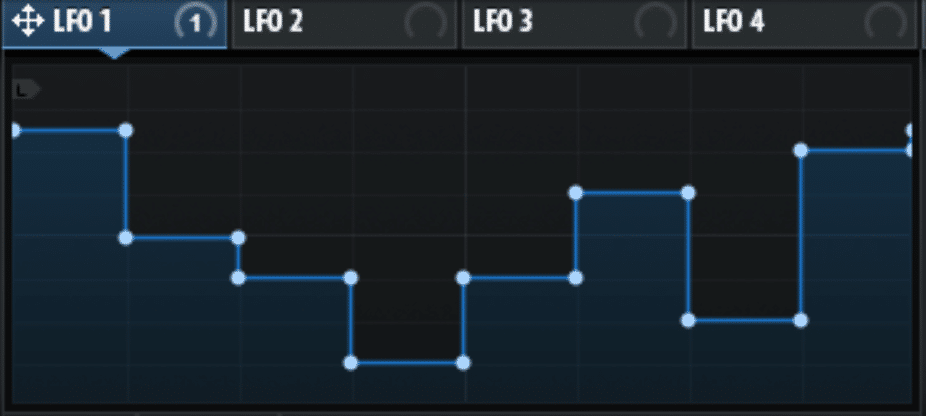
LFOs are perfect for designing evolving pads and textures that shift and morph over time.
By modulating parameters like filter cutoff, resonance, or even oscillator waveshape, we can create lush, atmospheric sounds that breathe life into your compositions.
For instance, try using two LFOs with different rates and depths to modulate the filter cutoff and resonance of a synth pad.
This will create a rich, evolving texture that adds depth and interest to your mix.
-
Rhythmic Patterns and Pulsating Basslines

By using LFOs to modulate volume, pitch, or filter cutoff, we can create rhythmic patterns and pulsating basslines that drive your tracks forward.
Experiment with different LFO rates and waveforms to design complex, engaging rhythms that complement your compositions.
For example, try applying a square wave LFO to the volume of a synth bass patch, and sync the LFO rate to your project tempo.
This will create a pulsating bassline that provides a solid foundation for your track.
What Is An Lfo? Final Thoughts
LFOs are an indispensable tool in the arsenal of every music producer, as you now know.
By harnessing the power of LFOs and mastering their various applications, you can unlock a realm of creativity, transforming your sounds from static and lifeless to dynamic and captivating.
You’re now armed with this newfound knowledge of LFOs, their role in music production, and the intricate interplay of parameters.
So, you’ll never have to ask yourself “what is an LFO” again.
It’s time to unleash your imagination and elevate your sound design to new heights.
However, in order to practice the aforementioned tips found throughout this article, you’re going to need some dope Serum presets.
Luckily, found inside the FREE Unison Serum Essentials pack, you can find the absolute hottest Serum presets ever.
It includes 808 presets, bass presets, lead presets, pad presets, and much more.
They were all professionally crafted by the world’s top producers and sound designers, guaranteeing that you’ll blow the competition right out of the water.
BONUS: If you’d like to find out how to reverse engineer any preset in Serum, we’ve got you covered on that end too!
So, go forth and conquer the world of LFOs, experimenting with modulation techniques to create awe-inspiring, immersive soundscapes that will leave your listeners spellbound.
Until next time…






